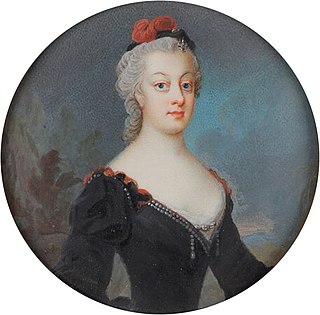Related Research Articles

The Torsåker witch trials took place in 1675 in Torsåker parish in Sweden and were the largest witch trials in Swedish history. In a single day 71 people were beheaded and then burned.
Laurentius Christophori Hornaeus or also known as Lars Christophri Hornæus, was a priest of the Church of Sweden. He was the parish vicar of Torsåker and Ytterlännäs, Sweden, and known for his role during the Torsåker witch trials.
Malin Matsdotter or Mattsdotter, also known as Rumpare-Malin was an alleged Swedish witch. She is known as one of few people in Sweden confirmed to have been executed by burning for witchcraft, and the only one to be executed by this method during the famous witch hunt Det Stora oväsendet in Sweden during 1668–1676, which ended with her execution.
Brita, "the wife of Jöran Pipare" was an alleged Swedish witch. Her case is a significant one, illustrating a witch trial held when the belief in witchcraft had increased, but the law still did not permit harsh persecution of magic practice.
Geske, also known as Horgeske was the central figure of a witch trial in Stockholm. Her trial belonged to the first of the witch trials in Sweden in which the Sabbath of Satan in Blockula, the Devils pact and the Devil's mark were mentioned.
The Ramsele witch trial, which took place in 1634, is one of the few known Swedish witch trials before the great witch mania of 1668–1676.
Johan Johansson, usually known as the Gävle Boy, was a young Swedish boy remembered for being a witness in witch trials and for bearing substantial responsibility for the Katarina witch trials in 1676.
Brita Zippel, also called Britta Sippel was an alleged Swedish witch, known as "Näslösan", one of the victims of the Katarina witch trials during the great witch hunt known as "Det Stora oväsendet" in Sweden between 1668-1676. Together with her sister Anna Zippel.
Anna Zippel, also spelled as Sippel or Sippela, was an alleged Swedish witch, one of the most famous ones of the Katarina witch trials in Stockholm during the Swedish witch mania "Det stora Oväsendet" of 1668–1676; She was called "The Queen of Blockula", and together with her sister Brita Zippel the most famous witch in Swedish history, famed for her proud defense.
Ane Koldings was an alleged Danish witch. She was a main defendant in the Copenhagen witch trials held during the summer of 1590, which were held as a parallel to the famous North Berwick Witch trials in Edinburgh in Scotland.

Maria Elizabeth Vasa was a Swedish princess, daughter of King Charles IX of Sweden and Christina of Holstein-Gottorp, and by marriage Duchess of Östergötland.
Märet Jonsdotter was an alleged Swedish witch. She is one of the most known victims of the persecutions of sorcery in her country; she was the first person accused of this in the great witch hysteria called det stora oväsendet of 1668–1676, and her trial unleashed the beginning of the real witch hunt in Sweden, which was to cause the death of around 280 people in those eight years. She was known by the name "Big Märet" because she had a younger sister with the same name called "Small Märet" Jonsdotter.
Lasses Birgitta was an alleged Swedish witch. She was the first woman executed for sorcery in Sweden.
Anna Eriksdotter or Anna Ersdotter called Sotpackan, was a Swedish woman who was executed for witchcraft. She was the last person to be executed for witchcraft in Sweden.

The Finspång witch trial was a witch trial which took place in Finspång, Östergötland in Sweden in 1617. Between seven and nine women died as a result. It has a special place in Sweden's history as one of the very few larger witch trials in Sweden outside the period of 1668–1676, which was otherwise the time of the real witch hunt in Sweden. Also because it seems that the condemned were executed by burning, which was not the common way of execution for witch craft in Sweden. It was the biggest witch trial in Sweden before 1668, and resulted in the biggest execution for sorcery in Sweden outside of the 1668–76 witch hunt.

Countess Catherine Charlotte De la Gardie, also known as Catherine Charlotte de La Gardie, was a Swedish countess and courtier. She is famed for her support of the smallpox vaccination in Sweden, and for stopping the last witch trial in her country.
Gertrud Svensdotter (1656–1675) was a Swedish shepherdess. She was the witness and accuser in the witch trial against Märet Jonsdotter in 1668, the trial that unleashed the great witch hysteria in Sweden called Stora oväsendet, involving a series of witch trials in many parts of the nation and lasting until 1676.

Events from the year 1675 in Sweden

Sweden was a country with few witch trials compared to other countries in Europe. In Sweden, about four hundred people were executed for witchcraft prior to the last case in 1704. Most of these cases occurred during a short but intense period; the eight years between 1668 and 1676, when the witch hysteria called Det stora oväsendet took place, causing a large number of witch trials in the country. It is this infamous period of intensive witch hunt that is most well known and explored.
The Copenhagen witch trials of 1590 was the first major witch trial in Denmark. It resulted in the execution of seventeen people by burning. It was closely connected to the North Berwick witch trials in Scotland.
References
- ↑ Åberg, Alf, Häxorna: de stora trolldomsprocesserna i Sverige 1668-1676, Esselte studium/Akademiförl., Göteborg, 1989 (in Swedish)
- ↑ Ankarloo, Bengt, Satans raseri: en sannfärdig berättelse om det stora häxoväsendet i Sverige och omgivande länder, Ordfront, Stockholm, 2007 (in Swedish)
- ↑ Åberg, Alf, Häxorna: de stora trolldomsprocesserna i Sverige 1668-1676, Esselte studium/Akademiförl., Göteborg, 1989 (in Swedish)